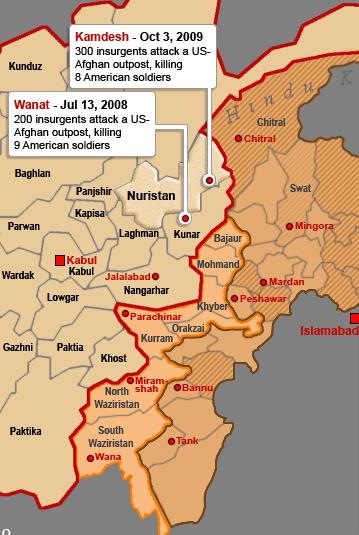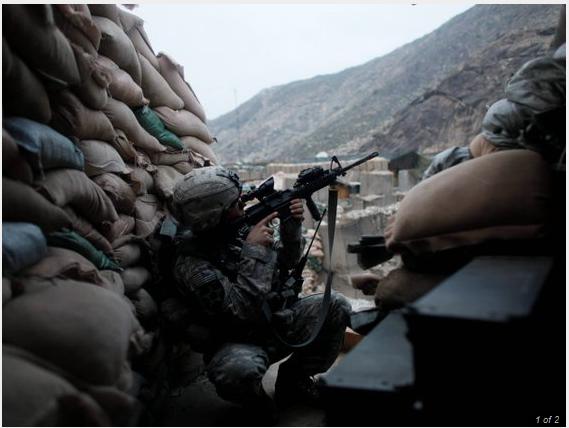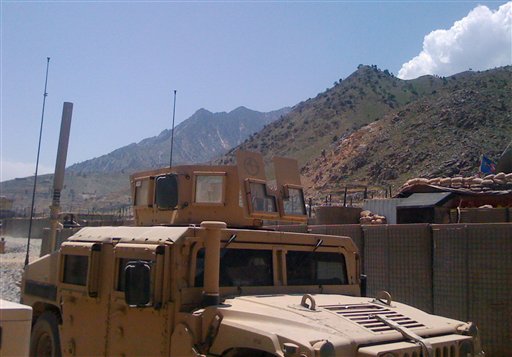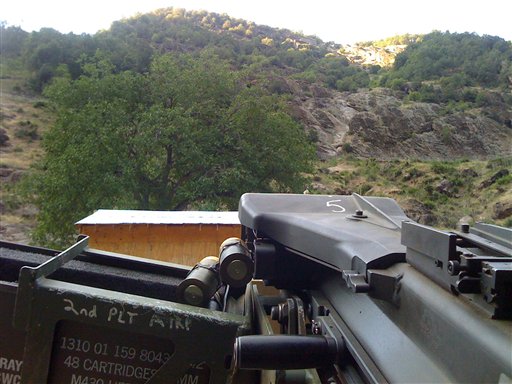Blaming The Gun For The Battle Losses
BY Herschel SmithRobert H. Scales wrote a piece for The Atlantic entitled Gun Trouble, with the catchy subtitle as follows: The rifle that today’s infantry uses is little changed since the 1960s—and it is badly flawed. Military lives depend on these cheap composites of metal and plastic. So why can’t the richest country in the world give its soldiers better ones?
Scales then proceeds to rehearse the history of flaws after the initial rollout of the M-16 in Vietnam, well known flaws (and failed to mention others, such as the fact that the chamber and barrel weren’t chrome-lined in the initial stages of production). He pans the 5.56 mm NATO round, and ends up recommending two (what he considers to be) improvements. First, he wants a larger caliber round, and second, he wants a gas recirculation system rather than the current DI system in use in the Eugene Stoner design (He fails to mention that the gas recirculation system weighs the front end of the rifle down and makes it more difficult to maneuver in CQB such as room clearing. This is a point made to me by my son, who didn’t even like my quad-rail on the front end of my RRA rifle due to its weight). Scales points to Wanat as proof positive that American lives are being wasted by a bad design.
The M4, the standard carbine in use by the infantry today, is a lighter version of the M16 rifle that killed so many of the soldiers who carried it in Vietnam. (The M16 is still also in wide use today.) In the early morning of July 13, 2008, nine infantrymen died fighting off a Taliban attack at a combat outpost near the village of Wanat in Afghanistan’s Nuristan province. Some of the soldiers present later reported that in the midst of battle their rifles overheated and jammed. The Wanat story is reminiscent of experiences in Vietnam: in fact, other than a few cosmetic changes, the rifles from both wars are virtually the same. And the M4’s shorter barrel makes it less effective at long ranges than the older M16—an especially serious disadvantage in modern combat, which is increasingly taking place over long ranges.
In spite of the high number of kills in the wars in Vietnam, Iraq and Afghanistan, Scales calls the 5.56 mm a “varmint round.” We’ve seen all of this before, much of it coming from experience many decades ago. But we’ve seen testing that simply shows much of the bad press for the Stoner design (and good press for the Kalashnikov design) to be false. Recall the testing done on the Knights Armament rifle, and reader Pat Hines sends two more examples here and here. The point is granted that Rock River Arms, Knights Armament, LaRue Tactical and Daniel Defense isn’t the Colt produced under milspec for the Army and Marine Corps (these are all superior to the Colt M-16 and M-4). Furthermore, recall that we’ve discussed what it means to be milspec and what it doesn’t. Not milspec isn’t always worse, and milspec isn’t always better.
Still, my own son Daniel tells me that he never had any problems with either his SAW or an M-4 when he used that in training and in Fallujah, Iraq (while still claiming that my RRA rifle was better than the Colt he used). The biggest problem with Scales’ argument isn’t that it doesn’t rely on hard evidence regarding quality battle rifles today (and it doesn’t, and some AR-15s are better designed and manufactured than the M-4 it must be admitted). The biggest problem with his argument is that it blames the wrong culprit.
My coverage of the Battle of Wanat goes back to before the Cubbison report, from 2008 until recently.
Analysis Of The Battle Of Wanat
Investigating The Battle Of Wanat
The Contribution Of The Afghan National Army In The Battle Of Wanat
The Battle Of Wanat, Massing Of Troops And Attacks In Nuristan
Second Guessing The Battles Of Wanat And Kamdesh
And many other articles. I am proud to have contributed in some small way to the Wanat report still on file at Fort Leavenworth (on page 255 three of my articles are cited). Specifically, it was published by the Combat Studies Institute Press, U.S. Army Combined Arms Center.
The kill ratio was indeed lower at Wanat than has been noted at other engagements, but the fact that Soldiers had to put 400 rounds through their weapons in such a short time frame is indicative of a different problem than the gun. First of all, with all due respect to the Soldiers who were there, fire control and long distance optics would have been a valuable commodity. When training his “boots,” my son worked first, middle and last on rate of fire and fire control. And use of a larger bore weapon wouldn’t have helped barrel temperature (have you ever shot a large caliber weapon?), and would certainly have hurt the ability to regain sight picture after firing due to significant recoil.
Use of DMs with M-14s or bolt action sniper rifles would have helped (the Marines make use of such tactics), as would have training in shooting uphill (to which very few units train – I know this from conversations with Army trainers). But the biggest problems with Wanat were associated with command choices that could have been done differently. Vehicle Patrol Base Wanat (it was a VPB rather than a FOB), took entirely too long to set up, allowing enemy massing of forces, something I’ve noted on a number of occasions in Afghanistan (it’s a favorite tactic when the Taliban think they can greatly outnumber their opponent).
Furthermore, terrain was critical in that the U.S. troops didn’t control the high country surrounding the VPB which was in a valley. One Marine Captain commented to me as follows:
The platoon in Wanat sacrificed control of the key terrain in the area in order to locate closer to the population. This was a significant risk, and I don’t see any indication that they attempted to sufficiently mitigate that risk. I can empathize a little bit – I was the first Marine on deck at Camp Blessing back when it was still Firebase Catamount, in late 2003. I took responsibility for the camp’s security from a platoon from the 10th Mountain Div, and established a perimeter defense around it. Looking back, I don’t think I adequately controlled the key terrain around the camp. The platoon that replaced me took some steps to correct that, and I think it played a significant role when they were attacked on March 22nd of 2004. COIN theorists love to say that the population is the key terrain, but I think Wanat shows that ignoring the existing natural terrain in favor of the population is a risky proposition, especially in Afghanistan.
The force was simply too small (platoon size versus virtual battalion size Taliban force), and they were simply outgunned. It’s remarkable that they didn’t have even more casualties. Blaming the gun we deployed with the Soldiers is the easy thing to do. It’s also the wrong thing to do, and it’s disingenuous. Blaming the men who made the decision to deploy the way they did would be the hard thing to do because it gets personal. But at least it would be honest.
See also:
War is Boring, The M-4 Carbine Is Here To Stay
Dan Morgan on Wanat







